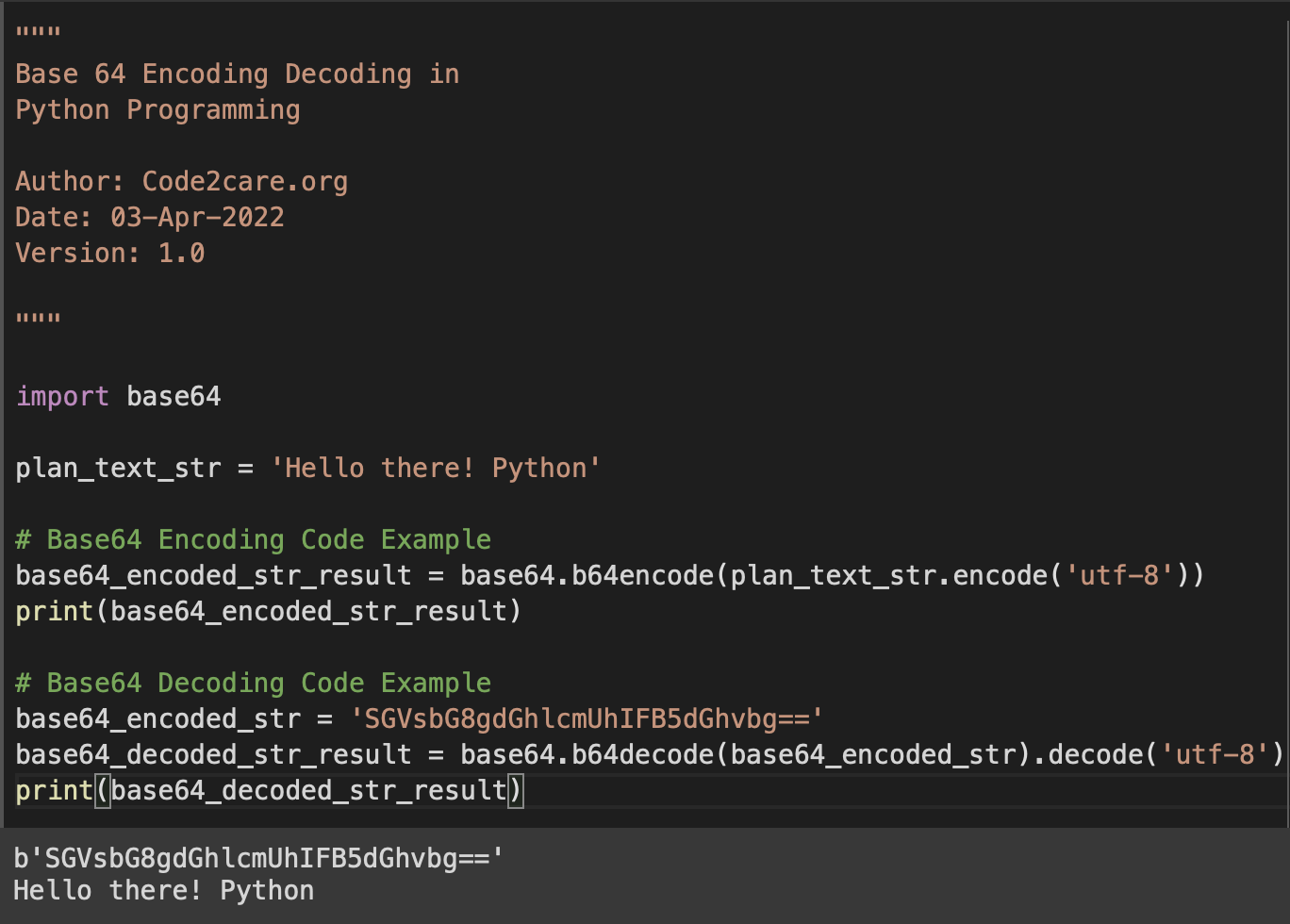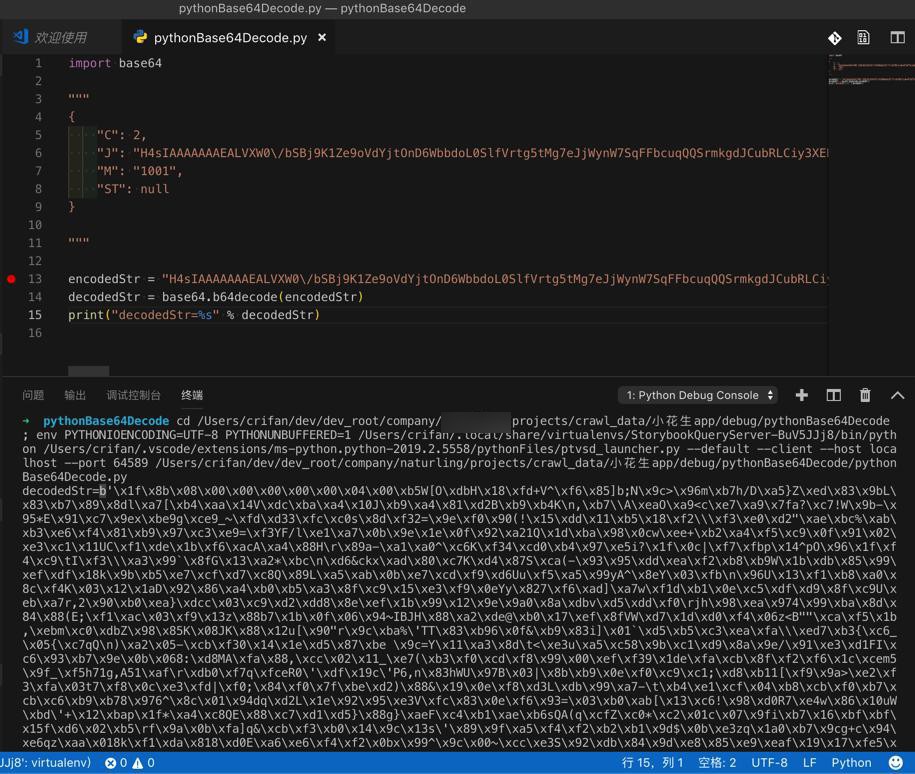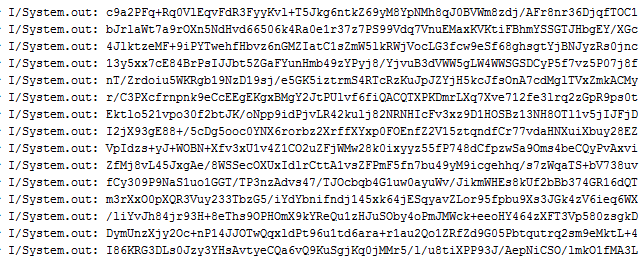

Let's see how it works by converting the string "Python" to a Base64 string.


If we were to Base64 encode a string we would follow these steps: We will illustrate how Base64 encoding works by converting text data, as it's more standard than the various binary formats to choose from. Now that we know what Base64 encoding and how it is represented on a computer, let's look deeper into how it works. Note: This is not an encryption algorithm, and should not be used for security purposes. When the computer converts Base64 characters to binary, each Base64 character represents 6 bits of information. + and / for new lines (some implementations may use different characters).

The name of this encoding comes directly from the mathematical definition of bases - we have 64 characters that represent numbers. In mathematics, the base of a number system refers to how many different characters represent numbers. What is Base64 Encoding?īase64 encoding is a type of conversion of bytes into ASCII characters. We will then use Python to Base64 encode and decode both text and binary data. In this tutorial, we would learn how Base64 encoding and decoding works, and how it can be used. By encoding our data, we improve the chances of it being processed correctly by various systems. Files with binary data, bytes that represent non-text information like images, can be easily corrupted when being transferred and processed to text-only systems.īase64 encoding allows us to convert bytes containing binary or text data to ASCII characters.
Python base64 decode decompress pdf#
All Rights Reserved.Have you ever received a PDF or an image file from someone via email, only to see strange characters when you open it? This can happen if your email server was only designed to handle text data. # The output is the original data: # VGhlIHF1aWNrIGJyb3duIGZveCBqdW1wZWQgb3ZlciB0aGUgbGF6eSBkb2cuDQpUaGUgcXVpY2sgYnJvd24gZm94IGp1bXBlZCBvdmVyIHRoZSBsYXp5IGRvZy4NClRoZSBxdWljayBicm93biBmb3gganVtcGVkIG92ZXIgdGhlIGxhenkgZG9nLg0KVGhlIHF1aWNrIGJyb3duIGZveCBqdW1wZWQgb3ZlciB0aGUgbGF6eSBkb2cuDQpUaGUgcXVpY2sgYnJvd24gZm94IGp1bXBlZCBvdmVyIHRoZSBsYXp5IGRvZy4NCg0KĢ000-2023 Chilkat Software, Inc. AppendEncoded(compressedBase64, "base64")ĭecompressedBase64 = binDat. # The compressed base64 is: C8lIVSgszUzOVkgqyi/PU0jLr1DIKs0tSE1R圜9LLVIoAcrnJFZVKqTkp+vxcoUMYeW8XAA= # Now decompress:īinDat. # Get the compressed data in base64 format:ĬompressedBase64 = binDat. The decoded bytes will be contained in the BinData.īinDat. # Load the base64 data into a BinData object. StrBase64 = "VGhlIHF1aWNrIGJyb3duIGZveCBqdW1wZWQgb3ZlciB0aGUgbGF6eSBkb2cuDQpUaGUgcXVpY2sgYnJvd24gZm94IGp1bXBlZCBvdmVyIHRoZSBsYXp5IGRvZy4NClRoZSBxdWljayBicm93biBmb3gganVtcGVkIG92ZXIgdGhlIGxhenkgZG9nLg0KVGhlIHF1aWNrIGJyb3duIGZveCBqdW1wZWQgb3ZlciB0aGUgbGF6eSBkb2cuDQpUaGUgcXVpY2sgYnJvd24gZm94IGp1bXBlZCBvdmVyIHRoZSBsYXp5IGRvZy4NCg0K" # See Global Unlock Sample for sample code. # This example assumes the Chilkat API to have been previously unlocked. Raspberry Pi and other single board computers Python Module for Windows, Linux, Alpine Linux, Note: This example requires Chilkat v9.5.0.66 or greater.
Python base64 decode decompress how to#
This example demonstrates how to decode, compress, and re-encode to smaller base64 representing the compressed data. Imagine we have data represented as a base64 string. (CkPython) Compress and Decompress Base64


 0 kommentar(er)
0 kommentar(er)
